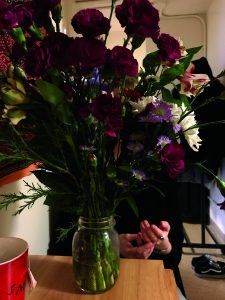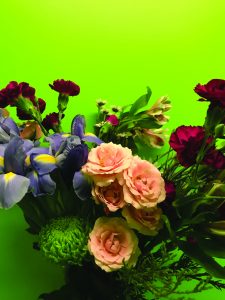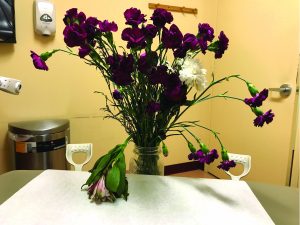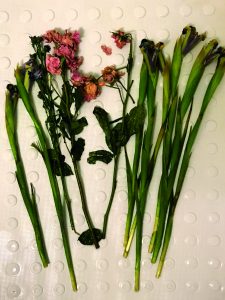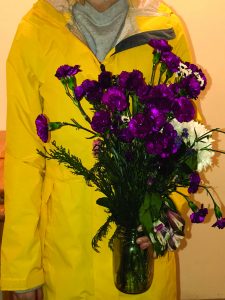For my final studio project, I let the artist become the muse. I put myself into the world of Rachel Ruysch, a Dutch still life painter from the late 17th century. I first came to know of Ruysch in my AP Art History class. My teacher, Mr. Biglan, proudly projected Still Life with Fruit and Insects on the board. Atop this photo was the word, “symbolism.” Mr. Biglan’s voice got lower as his excitement rose, “now, you may think this is just a painting of a simple still life. But, what you will soon learn is this is not just any painting. It is from the hand of a female artist and it has nothing to do with fruit, flora or fauna. It has everything to do with Christ, devotion, and death.” His words became the bait for the hook of curiosity. I bit into it, and I was getting reeled in.
When this project was assigned, I remembered the long forgotten female artist who created these intricate still lives about bejeweled with spectacles of allegory and mythology. I was inspired by her symbols that she used to reveal a deeper narrative. Most of all, I was inspired by what she came up with during a time of such heavy artistic restrictions. I decided to mimic this process, and let myself think freely in traditionally unthinkable circumstances: I would choose my own subject and let it control me.
I created my own still life that mirrored the flora chosen by Ruysch (roses, carnations, wildflowers, etc), and I took it everywhere with me until it withered.
